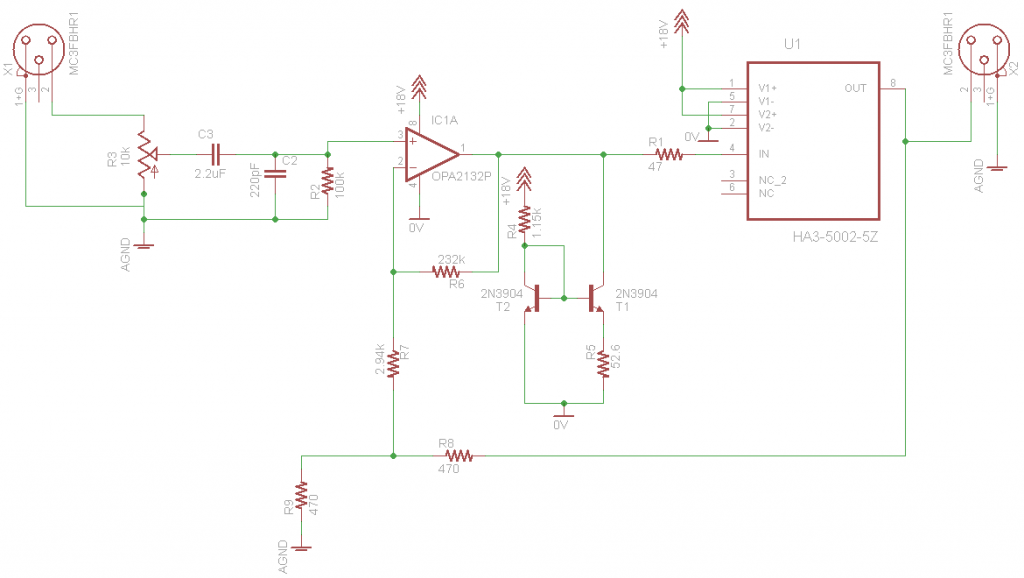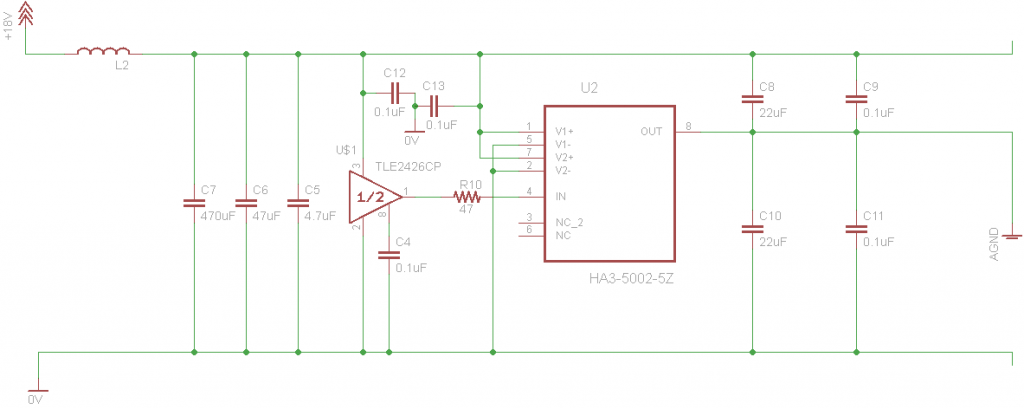realpsyence
New Head-Fier
- Joined
- Apr 7, 2013
- Posts
- 7
- Likes
- 0
Hi Folks,
Been searching/reading as much as possible but I'm quite new to audio amplifier circuits, though I do build electronics semi-regularly.
Have a CMoyBB (2227) and O2 on the way, but kinda like the idea of a parts-bin special. I've got the following chips in my parts bin:
OPA2132P x1
OPA551PA x2
TLE2426CP (8-pin version) x5
HA3-5002 x5
Driving Grados and IEMs so the thinking was to shoot for a current capacity of ~45mA to be safe.
So...before I found the 5002s my thinking was to use the 2132 with local feedback, then buffer each channel with the 551s and provide virtual ground with dual TLE2426s.
Now however, I'm debating whether/where to use the 551s at all, I could conceivably buffer each channel and a single TLE with the 5002s, use global feedback, and ??? Or use the 551 as the virtual ground, or use it to buffer the TLE...
Looking for reasonable linearity and will be perf-boarding it, to compare with the two PCB amps I have on the way.
Preferred topology? Good references? I probably have an LM317 or something around here, won't be worried about battery life, but I am lacking a complement of discretes, not sure I totally understand the PreBuf section of the PIMETA (EDIT: Aahh, Class-A biasing, will need to look for 2nXXXXs and decide if the 2132p will be OK in Class-A).
Sanity Check? Thanks everyone, great forum!
Been searching/reading as much as possible but I'm quite new to audio amplifier circuits, though I do build electronics semi-regularly.
Have a CMoyBB (2227) and O2 on the way, but kinda like the idea of a parts-bin special. I've got the following chips in my parts bin:
OPA2132P x1
OPA551PA x2
TLE2426CP (8-pin version) x5
HA3-5002 x5
Driving Grados and IEMs so the thinking was to shoot for a current capacity of ~45mA to be safe.
So...before I found the 5002s my thinking was to use the 2132 with local feedback, then buffer each channel with the 551s and provide virtual ground with dual TLE2426s.
Now however, I'm debating whether/where to use the 551s at all, I could conceivably buffer each channel and a single TLE with the 5002s, use global feedback, and ??? Or use the 551 as the virtual ground, or use it to buffer the TLE...
Looking for reasonable linearity and will be perf-boarding it, to compare with the two PCB amps I have on the way.
Preferred topology? Good references? I probably have an LM317 or something around here, won't be worried about battery life, but I am lacking a complement of discretes, not sure I totally understand the PreBuf section of the PIMETA (EDIT: Aahh, Class-A biasing, will need to look for 2nXXXXs and decide if the 2132p will be OK in Class-A).
Sanity Check? Thanks everyone, great forum!




